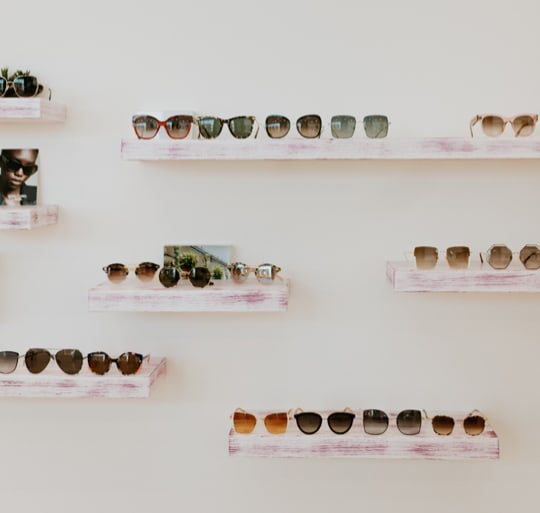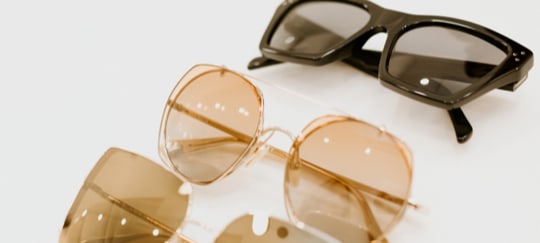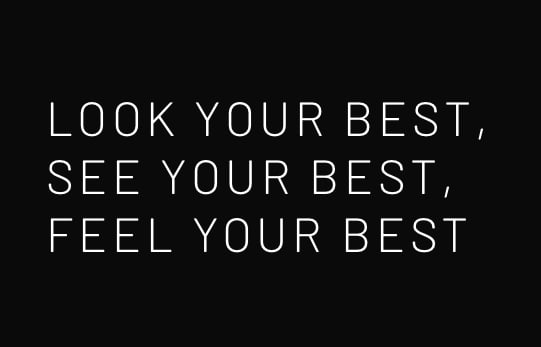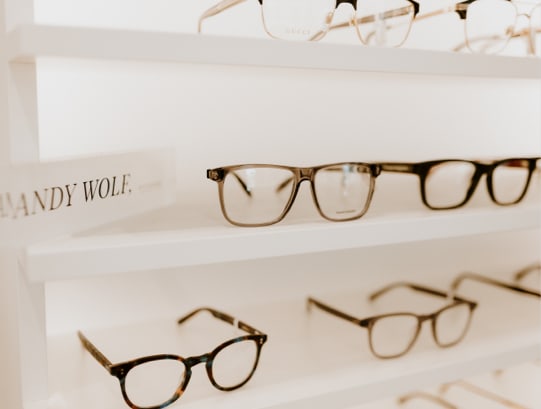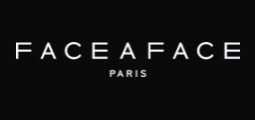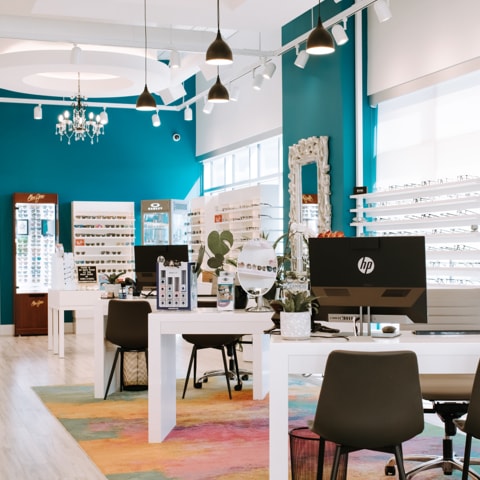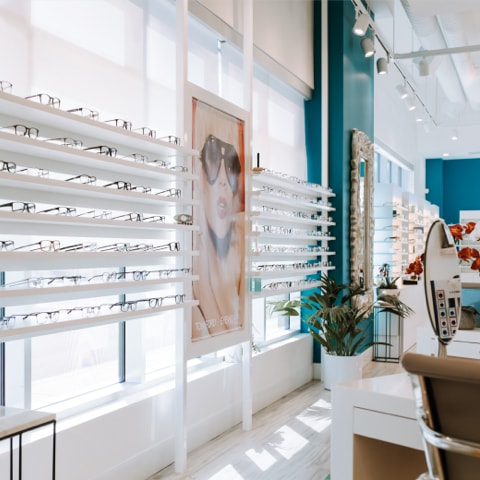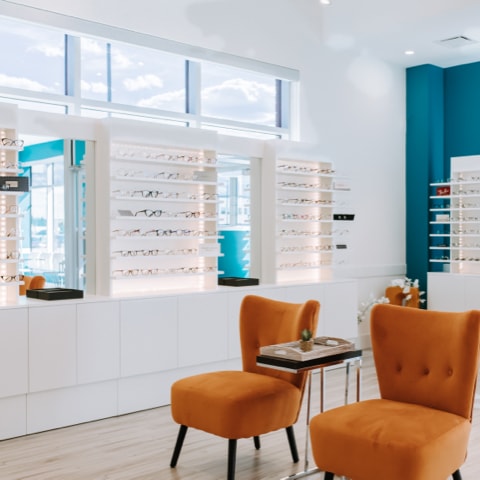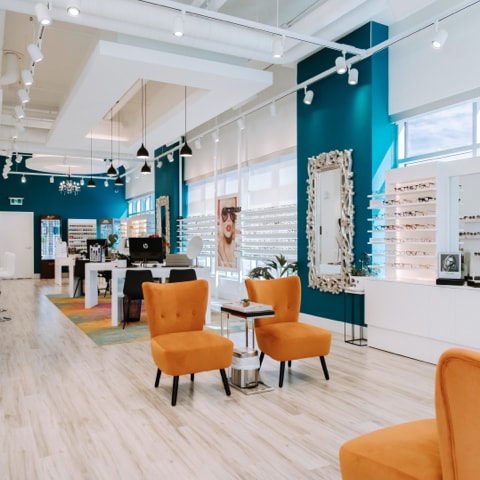Dry Eye Care Every Step of the Way
Saskatoon is a beautiful place, but we all know that the weather can be a bit unpredictable. Whether it’s from the chilly winters or scorching summers, dry eyes can be a common issue throughout the year. We’re here to help you find the relief you need with our comprehensive approach to dry eye care.
Our dry eye treatment services feature at-home, chronic, and in-office treatments along with dry eye consultations and assessments. From innovative technology like LipiFlow, radiofrequency (RF), and intense pulsed light (IPL) treatments to artificial tears and warm compresses, we have you covered.
Dry eye doesn’t have to keep you down! Contact us to schedule an appointment today.
Book Appointment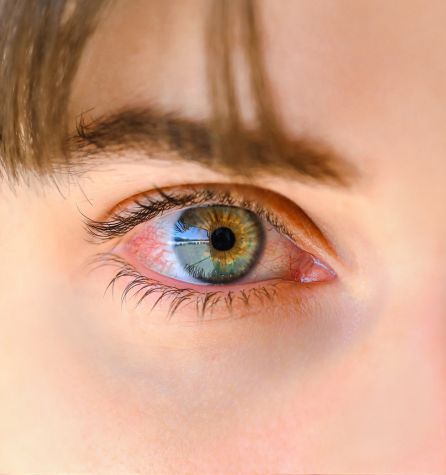
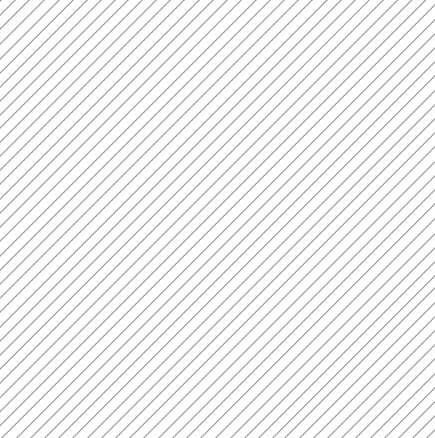
What Is Dry Eye?
Dry eye is a common condition affecting about 25% of Canadians. It can have various ways of bothering your eyes, but some of the common signs and symptoms to look out for include:
- Excessive tearing
- Irritation
- Soreness
- Scratchiness, burning, or itchiness
- A feeling of something foreign in the eye
- Heavy or fatigued eyes
- Difficulty wearing contact lenses
- Fluctuating or blurry vision
- Redness
The good news is that we’re here to help!
How Your Tear Film Works
The health of your tears plays a big role in preventing dry eye! Unlike emotional or reflex tears that flow when you stub your toe or have a good laugh, basal tears form a tear film that sticks around 24/7.
Your basal tears have 3 layers: lipid (oil), liquid (water), and mucin (mucus). When the glands responsible for producing these tear components aren’t functioning properly or become inflamed, dry eye can occur.
Inflammation and other dry eye symptoms can also be caused by meibomian gland dysfunction (MGD).
Lipid Layer (Oil)
The lipid outer layer is composed of a natural oil called meibum. The lipid layer, produced by the meibomian glands, prevents moisture from drying up and makes the eye’s surface smooth.
Watery Layer (Liquid)
The lacrimal gland’s watery middle layer delivers nutrients—like proteins and electrolytes—and keeps the eyes’ surface wet.
Mucin Layer (Mucus)
The inner mucus layer is produced by goblet cells found in the conjunctiva. The clear mucus helps the tear film spread evenly across the eye and stick to the surface.
MGD & Dry Eye are Related
When the glands that line your eyelids get inflamed, it can lead to meibomian gland dysfunction (MGD). This condition can disrupt tear production by reducing the oils, making the watery layer dry up.
With MGD, the oils produced by your meibomian glands can get thick and clog the glands. This can result in inflammation and dry eye symptoms like watery eyes, eye irritation, and that a scratchy sensation.
If you’re experiencing any of these symptoms, it’s important to seek treatment. Our team can help you manage MGD through IPL therapy and LipiFlow.
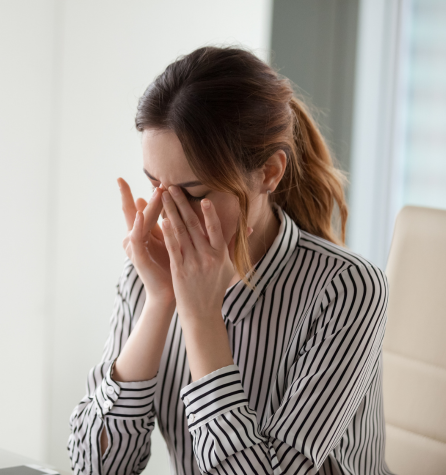
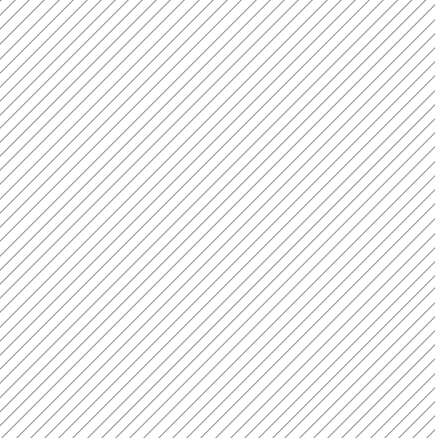
The 3 Types of Dry Eye
Just like symptoms can differ, dry eye also comes in different forms. The main 3 types of dry eye disease include evaporative, aqueous deficient, and mixed.
Evaporative Dry Eye or MGD
Evaporative dry eye or meibomian gland dysfunction (MGD) happens when the meibomian glands don’t produce enough oil to prevent the tear film from evaporating. You might make enough of the watery layer, but it doesn’t last.
MGD is a common cause of chronic dry eye symptoms, with one study revealing up to 86% of dry eye patients exhibited signs of MGD.
Aqueous Deficient Dry Eye
Aqueous deficient dry eye occurs when the lacrimal gland doesn’t produce enough watery fluid to lubricate the eye. You might have all the tear components, but there isn’t sufficient moisture to spread across the eye.
Mixed Dry Eye
Mixed dry eye combines meibomian gland dysfunction (MGD) and aqueous deficient dry eye all in one. When treating mixed dry eye, it’s crucial to consider the quantity and quality of tears you produce.


Our Dry Eye Assessments & Costs
We’re excited to offer a range of dry eye assessments for patients with valid SK Health Cards. From the initial consultation to the full dry eye assessment, we’ve got you covered!
We want you to feel confident choosing our clinic for your eye care needs, so we’re always transparent about our pricing. Your comfort and satisfaction are important to us, and our friendly team is here to help!
Dry Eye Assessment
The assessment stage is the dry eye consult and imaging to determine which type of dry eye disease you have so a customized treatment plan can be created. We will take images of the meibomian glands to look for gland atrophy, we will measure how fast your tear film evaporates, and we will also tell you the amount of tear volume you have. This assessment is $199.
Dry Eye Assessment + Tear Osmolarity
This option is the dry eye assessment with an evaluation of your tear osmolarity, which measures how much salt you have in your tears. If there is too much salt in your tears, it leads to improper tear production, distribution and elimination. This assessment is $249 (so $50 for the tear osmolarity alone).
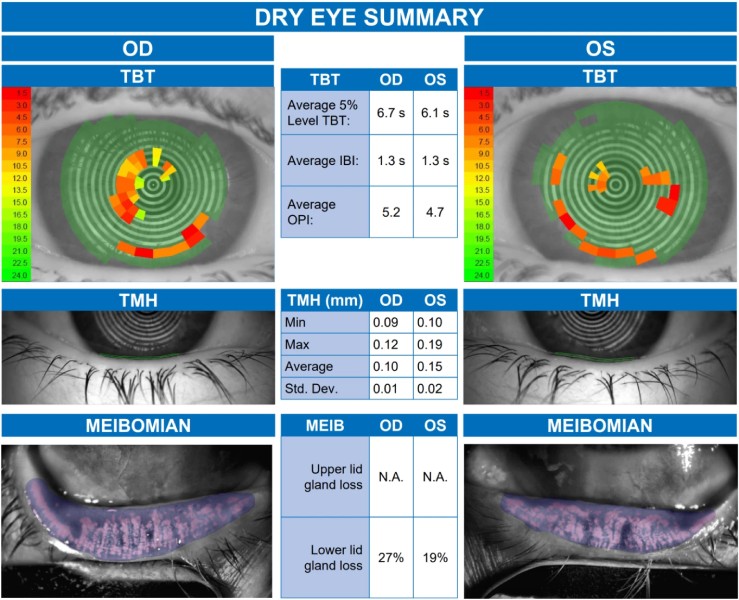

Exploring Dry Eye Risk Factors
Dry eye disease can affect anyone, regardless of age, gender, or race. However, certain factors can increase the risk of developing dry eye.
Computer Use
When working on a computer or using a digital device, we tend to blink less frequently and incompletely—meaning our eyes don’t fully close. These poor blinking patterns can cause tear evaporation.
Digital eye strain and dry eye tend to go hand-in-hand. An eye exam can help determine the cause of your symptoms so you can get the appropriate treatment.
Contact Lens Wear
Contact lenses with a high water content, such as soft contact lenses, can absorb moisture from the surface of your eye, which can cause dryness or irritation.
Dry eye is one of the main reasons why people stop wearing contact lenses. That’s why finding the right fit and scheduling regular eye checkups are crucial to maintaining your comfort.
Aging
Older adults, especially those over 50, have a greater risk of developing dry eye. As we age, we produce fewer tears.
Menopause & Hormonal Changes
Hormones are the body’s chemical messengers, including messages about when to produce tears! Post-menopausal women are at a greater risk for dry eyes because of significant hormonal changes.
Environment
The environment you experience daily, from air quality to humidity, can affect your eye comfort. Dry wind, dust, air conditions, ceiling fans, and heating systems can all contribute to dry eye symptoms.
Smoking
Smoke acts as a drying agent, causing the moisture layer of your eyes to evaporate. Additionally, smoking contains chemicals that can harm ocular and skin tissue, potentially delaying healing and increasing the risk of corneal infections.
Health Conditions
Various health conditions can impact your eye health or exacerbate dry eye symptoms, including diabetes, lupus, Sjogren’s Syndrome, rheumatoid arthritis, and thyroid problems.
Medications
A variety of medications can increase the risk of developing dry eye, including antidepressants, acne medications, anti-histamines, decongestants for colds, and some blood-pressure-lowering medications.
Eyelid Conditions
Certain eyelid conditions, like lagophthalmos (incomplete eyelid closure), can cause dryness issues. Other eye conditions like blepharitis or ocular rosacea can also affect the skin around the eyes, causing chronic inflammation that affects tear production.
Prior Laser Eye Surgery
Laser eye surgeries like LASIK, PRK, or SMILE can lead to increased dryness. Whether you need support after your eye surgery or decide to work with us right from the beginning with a laser eye surgery consultation, we’re here to help you safeguard your long-term eye health and comfort throughout the process.
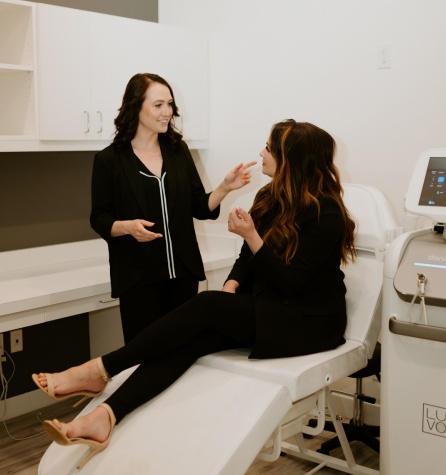

How We Treat Different Types of Dry Eye
Your eyes deserve a one-on-one approach. That’s why we offer different levels of treatment for individual needs.
We may recommend over-the-counter eye drops and at-home therapies for mild or occasional dry eye symptoms. If you’re experiencing persistent or severe symptoms, the treatment options can vary based on the underlying cause.
We’ll work together to determine whether at-home remedies, chronic care, or in-office treatments would be most beneficial for you.
At-Home Treatments for Dry Eye
Artificial Tears
Preservative-free artificial tears are commonly recommended for people experiencing dry eye syndrome. The preservatives can be counterproductive, causing dryness instead of resolving it. We have a wide range of options for artificial tears, so feel free to ask our team for guidance.
Omega-3 Fatty Acids
Not all omegas are created equal, so we recommend purchasing the dry eye formula available at optometry clinics. Omega-3s can be especially beneficial for individuals with MGD, although results may take a few months. Most health guidelines recommend adults taking 250–500 mg of combined EPA and DHA (types of omega-3) per day.
Don’t hesitate to ask our team for additional information, we’re here to help!
Hot Compresses with Bruder Masks
Bruder masks are specially designed masks that apply heat to the eyelids, improving the quality and quantity of natural tears produced by the eyes. When paired with hot compresses for at least 8 to 10 minutes at a time and once or more daily, they can help you find some relief from MGD symptoms.
Ziena Moisture Release Eyewear
Ziena moisture release eyewear is designed to alleviate dry eye symptoms by creating a moisture-rich environment around the eyes, reducing tear evaporation and blocking irritants like wind and dust. These stylish glasses feature adjustable vents and customizable lenses, offering both functionality and comfort for daily use.
Other At-Home Solutions
We also recommend other at-home solutions, including:
-
- Lid wipes with or without tea tree oil (consult your doctor first)
-
- Sleeping with a humidifier to create a more humid environment
-
- Practicing the 20-20-20 rule, which can also help with digital eye strain
Our experienced and friendly team also offers in-office treatments to complement your chronic treatments and at-home dry eye solutions. We’re here to help you every step of the way!
In-Office & Chronic Treatments for Dry Eye
If your dry eye symptoms are more serious and at-home therapies just aren’t cutting it, you’re in luck because we offer a wide range of in-office and chronic treatments. Treatment options will depend on your dry eye symptoms, their severity, and the results of our team’s consultations and assessments.
Our options for chronic dry eye include:
- Prescription medications
- Punctal plugs
- Scleral contact lenses
- Serum drops
- Amniotic membranes
- Thermal cautery
- ZEST Treatment
We can also combine potential treatment options such as RF, LipiFlow, and IPL therapy to treat dry eyes and MGD.
What Is ZEST?
ZEST (Zocular Eyelid System Treatment) is an in-office procedure targeting dry eye at its source—clogged meibomian glands in your eyelids. These glands produce oils that help keep tears stable, but they can become clogged with debris and disrupted by inflammation. ZEST uses a gentle gel and applicator to:
- Exfoliate your lid line, helping clear tear glands by removing debris and biofilm buildup from your eyelids and lashes.
- Reduce inflammation to promote better gland function.
The ZEST procedure takes about 15 minutes, and we recommend a treatment once every 6 months.
What to Expect with ZEST
- Treatment Time: 15 minutes total
- Downtime: Minimal*
- Level of Discomfort: Minimal*
- Procedure: You’ll be comfortably seated while we use a sterile applicator with ZEST gel to gently remove debris from your eyelids.
- Skin Types: All
- Recommended frequency: Once every 6 months
*For many people, there’s no downtime or discomfort associated with ZEST, but everyone’s experience can vary. We can help you learn more about what to expect during your next visit.
What Is LipiFlow?
LipiFlow uses thermal heat to treat chronic and severe symptoms of MGD. It uses thermal pulsation to help unclog and express the glands rather than a doctor doing it manually. After the treatment, the meibomian glands gradually start to re-produce oil again except this time, the quality is improved since all the cloggages were removed. It takes about 8 weeks before you start noticing the effects of the procedure.
LipiFlow is considered noninvasive and safe, as there are essential no contraindications.
What to Expect with LipiFlow
- Treatment Time: 15 minutes total
- Downtime: None
- Level of Discomfort: None
- Procedure: An anesthetic drop is put in the eye, and then a cornea shield is put in place. The thermal applicators heat the upper and lower eyelids.
- Skin Types: All
- Frequency: Once a year
What Is Intense Pulsed Light (IPL)?
Intense pulsed light (IPL) uses light energy to target blood vessels. It can help reduce the inflammation associated with MGD as well as unclogging the glands to improve their function. It’s actually one of the only treatments that may help regenerate the meibomian glands and addresses the cause of dry eye syndrome.
IPL can also stimulate collagen production for aesthetic benefits, such as reducing the look of fine lines and wrinkles, acne and acne scars, sun damage, dark circles around the eyes, melasma, chalazions, and rosacea. If you would like to treat other areas of your face or neck with IPL in addition to your dry eye treatment, we can do this for an additional fee. At Kennedy Eye Clinic, we use the Lumecca IPL by Inmode. It has Health Canada approval to treat dry eye syndrome.
What to Expect with IPL
- Treatment Time: 15–20 minutes total
- Downtime: Some redness around the treatment area for 1 hour after
- Level of Discomfort: It feels like you are being flicked by an elastic band. Post-procedure, there is gland expression done by the doctor, which may be uncomfortable for some but is not considered painful.
- Procedure: Ultrasound gel is put on and around the treatment area, and UV protection is provided. Sometimes an anesthetic drop is put in the eye, and then a cornea shield is put in place.
- Skin Types: Fitzpatrick skin types 1–3, sometimes 4
- Frequency: 4 treatments spaced 2–3 weeks apart to start, then 1–2 maintenance visits per year.
What Is Radiofrequency (RF)?
Radiofrequency (RF) heats up the meibomian glands to help provide immediate relief to clogged glands and improves function. This noninvasive treatment works by sending radiofrequency energy to the skin tissues. The skin’s natural resistance to the energy currents generates heat. Because of this temperature increase, it promotes tissue remodeling, increased blood circulation and detoxification.
RF can help help rejuvenate and tighten skin., reducing fine lines, wrinkles, and dark spots around the eyes. We can add on other parts of the face or neck for an additional fee. At Kennedy Eye Clinic, we use the Forma RF by Inmode. This bipolar device has Health Canada approval to treat dry eye syndrome and doesn’t require putting corneal shields in.
What to Expect with RF
- Treatment Time: 30 minutes total
- Downtime: None except for some redness around the treatment area for an hour after
- Level of Discomfort: None during treatment. Post-procedure there is gland expression done by the doctor, which may be uncomfortable for some but is not considered painful.
- Procedure: A gel is placed on and around your eyes.
- Skin Types: All
- Frequency: To start, 4 treatments spaced 2 weeks apart. Then, 2–3 visits a year after for maintenance. The frequency may be less if coupled with IPL treatments.
LipiFlow and RF have similar outcomes for dry eye, but LipiFlow is only 1 visit a year while RF is multiple.
What Is Low-Level Light Therapy (LLLT)?
Kennedy Eye Clinic is proud to offer low-level light therapy (LLLT) as part of our comprehensive eye care services. LLLT uses specific wavelengths of red and near-infrared light to deliver gentle energy to eye tissues.
LLLT can help stimulate your meibomian glands, responsible for producing the oils that keep your eyes lubricated, and help reduce dryness, irritation, and discomfort. At Kennedy Eye Clinic, we use LLLT technology from Celluma International.
LLLT can also be used for various aesthetic applications, promoting a more youthful appearance.
What to Expect with LLLT
- Treatment time: 10 to 20 minutes depending on targeted area and treatment goals.
- Downtime: LLLT is not invasive so does not require any downtime.
- Level of discomfort: You might feel a slight warmth on the treated area during the session but should not experience any discomfort.
- Procedure: A technician will position a handheld or panel LLLT device close to the targeted area, typically around your eyes for dry eye treatment.
- Skin types: LLLT is suitable for all skin types.
- Frequency: The frequency of LLLT treatments will vary depending on your individual needs and the condition being addressed.
Transparent Costs for In-Office Treatments
ZEST
- Single treatment: $119
LipiFlow
- Single treatment: $999
Lumecca IPL
- Single Treatment: $349
- Multiple Treatments: $1,199 (4)
- $90 (IPL Rosacea Add On)
Lipiflow & Lumecca IPL Combination
- Multiple treatments: $1,799 (4 IPL, 1 Lipiflow)
Forma RF
- Single Treatment: $349
- Multiple Treatments: $1,199 (4)
- $90 (IPL Rosacea Add On)
Forma RF & Lumecca IPL Combination
- Single treatment: $499 (1 of each)
- Multiple treatments: $1799 (4 of each)
Low-Level Light Therapy (LLLT)
- Single Session: $75
- Package of 12 Sessions: $750
- Add-on to any treatment above: $50
Aesthetic Add-ons to Any Dry Eye Service
Our Eye Spa has a lot of services that we can discuss with you if you are looking for something in addition to your dry eye treatments. These services include: full face RF, full face/spot IPL treatments, laser hair removal, Vivier medical grade skin care, chemical peels, Oxygeneo facials, and Morpheus8 RF Microneedling skin resurfacing treatments. Please let us know if any of these interest you or you can visit www.kennedyeyespa.com for pricing and promos.
To help offset the bundle cost, we are offering Affirm so you can buy now and pay later! Contact us for more information.
Your Dry Eye Destination in Saskatoon
At Kennedy Eye Clinic, we’ve got an eye for detail. Our care is always personalized, with your needs in mind. We’re all about being transparent when it comes to what you can expect for your dry eye treatment options. Helping our patients understand dry eye and their treatment options is our focus.
Contact us to schedule an appointment and so we can help restore your eye-deal eye comfort today!
Book AppointmentVisit Us in Saskatoon
Kennedy Eye Clinic
You can find us inside the Lakeside Medical Building on Mckercher and College Drive, with plenty of parking available out front.
We’re closed on long weekends.
By texting the number listed below, you agree to receive messages from Kennedy Eye Clinic. Msg & data rates may apply. Message Frequency varies. Unsubscribe at any time by replying STOP. Reply HELP for help.
- Phone: 306-952-6464
- Fax: 306-952-6465
- Email: [email protected]
- 100-215 Joseph Okemasis Drive
- Saskatoon, SK S7N 3A8
Hours
- Monday: 8:00 AM – 6:00 PM
- Tuesday: 8:00 AM – 6:00 PM
- Wednesday: 8:00 AM – 6:00 PM
- Thursday: 9:00 AM – 7:00 PM
- Friday: 9:00 AM – 5:30 PM
- Saturday: 9:00 AM – 3:00 PM
- Sunday: Closed
The Eye Studio by Kennedy Eye Clinic
You can find us on 8th Street East, we share a building with Saskatoon Dental House. There is lots of free parking out front.
We’re closed on long stat weekends.
By texting the number listed below, you agree to receive messages from Kennedy Eye Clinic. Msg & data rates may apply. Message Frequency varies. Unsubscribe at any time by replying STOP. Reply HELP for help.
- Phone: 306-986-5550
- Fax: 306-868-5551
- Email: [email protected]
- 120-619 8th Street East
- Saskatoon, SK S7H 0R1
Hours
- Monday: 8:00 AM – 6:00 PM
- Tuesday: 8:00 AM – 6:00 PM
- Wednesday: 8:00 AM – 6:00 PM
- Thursday: 9:00 AM – 7:00 PM
- Friday: 9:00 AM – 5:30 PM
- Saturday: Closed
- Sunday: Closed
Our Brands
